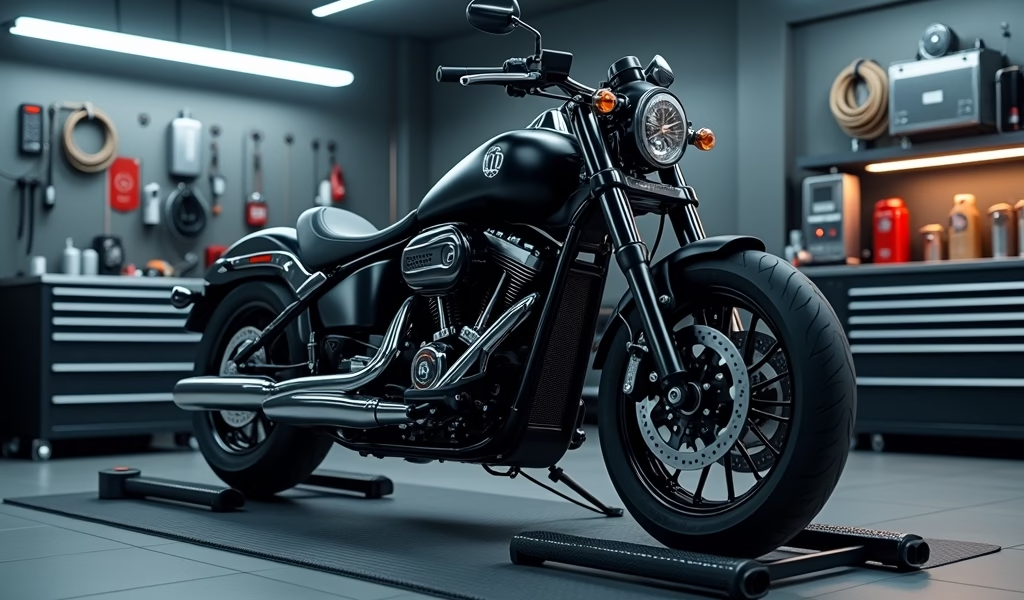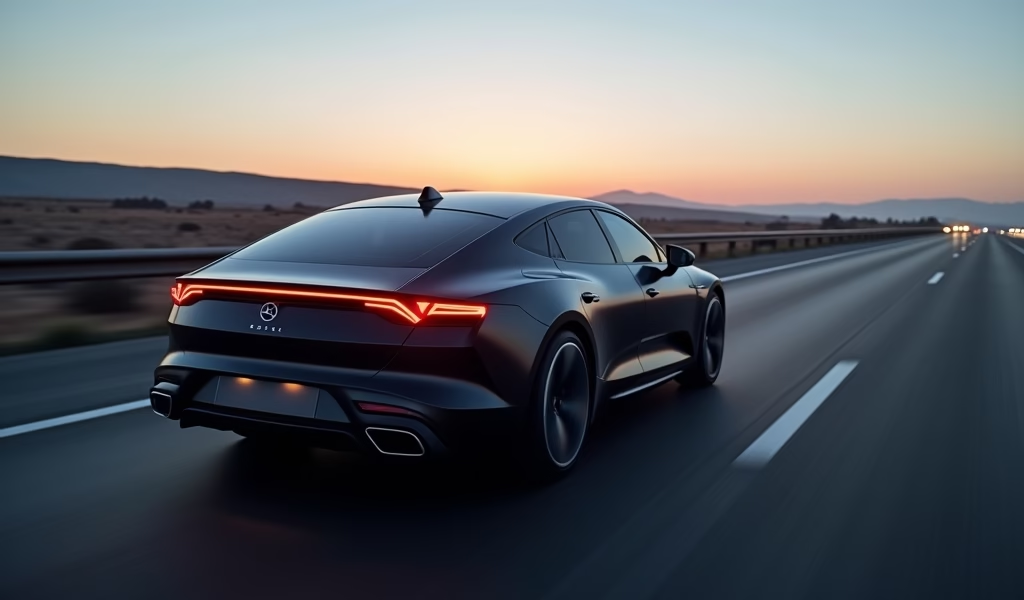Overview
This article provides a complete guide to motorcycle radar detectors, covering selection criteria, installation techniques, legal considerations, and maintenance tips for riders seeking to avoid speeding tickets. The guide emphasizes that radar detectors should enhance safety and awareness rather than encourage reckless riding, with specific recommendations for weather-resistant models, optimal placement positions, and power management strategies.
Table of Contents
- Why Use a Radar Detector on Your Motorcycle?
- Choosing the Right Radar Detector for Your Bike
- Top Installation Tips for Motorcycle Radar Detectors
- Weather Resistance: A Must-Have Feature
- Battery Life and Power Considerations
- Legal Issues You Should Know About
- Best Placement for Maximum Detection
- Maintaining Your Radar Detector
- Conclusion: Riding Smart with Your Radar Detector
- Frequently Asked Questions
Why Use a Radar Detector on Your Motorcycle?
Isn’t it frustrating when you’re cruising down an open road and suddenly spot those flashing lights in your mirror? We’ve all been there, and let me tell you, no rider wants to deal with the sting of an unexpected speeding ticket. A quality radar detector for motorcycles isn’t just a fancy gadget—it’s your road-riding guardian angel.
The freedom of the open road calls to us bikers like a siren’s song, but that freedom shouldn’t come with hefty fines. With proper detection technology, you’ll have precious seconds to check your speedometer and adjust accordingly. Think of it as having a lookout buddy who never sleeps, never blinks, and never misses a beat.
Police radar guns are getting sneakier than a fox in a henhouse, but your detector will help level the playing field. Some riders might say they don’t need such protection, but why wouldn’t you want an extra layer of security when you’re already vulnerable on two wheels? Plus, modern detectors do much more than just spot speed traps—they’re your complete road awareness system.
Choosing the Right Radar Detector for Your Bike
Picking a radar detector for your motorcycle is nothing like choosing one for your car—it’s a whole different beast! The perfect detector dances between durability and sensitivity, creating a balance as delicate as a well-tuned engine. You need something that can withstand the rumbling, tumbling, weather-weathering life on two wheels.
Look for detectors specifically designed for motorcycles with vibrant, vibrant, visible displays you can glance at even in bright sunlight. Size matters too—you want something compact enough to not create drag but powerful enough to detect signals from a meaningful distance. Many riders swear by brands like Valentine One, Escort, and Uniden, which have proven performance records in the motorcycle community.
Consider how the detector will connect to your riding experience. Some models offer Bluetooth helmet integration, sending alerts directly to your ears where wind noise won’t drown them out. Others feature bright LED indicators that can be mounted in your line of sight. Whatever you choose, remember: the best best radar detector is the one that works with your specific riding style, not against it.

Top Installation Tips for Motorcycle Radar Detectors
Installing your radar detector doesn’t have to be as complex as rebuilding a transmission. First things first, location, location, location! Mount your device where it has a clear “view” of the road ahead without obstruction from fairings, windshields, or your body. The handlebars or upper fork area often provides that perfect perch.
Secure wiring is absolutely crucial—loose cables flapping in the wind are both dangerous and likely to fail. Use quality zip ties, wire looms, and weatherproof connections to install your radar detector properly. Route wiring along existing cable paths when possible, keeping everything neat and protected from the elements.
Here’s a simple installation checklist to keep you on track:
- Choose a mounting location with unobstructed view
- Use vibration-dampening mounts to protect the unit
- Secure all wiring with waterproof connections
- Test the unit before your first long ride
- Consider professional installation if you’re not comfortable with electrical work
Remember that proper installation is half the battle in getting reliable performance. Like a masterful tattoo artist might say, “Rush the setup, regret it forever.” Take your time, do it right, and your detector will serve you faithfully for many miles.
Weather Resistance: A Must-Have Feature
When it comes to motorcycle radar detectors, weather resistance isn’t just nice to have—it’s as essential as tires on your bike! Mother Nature throws everything at us riders: driving rain, scorching sun, and occasionally conditions that make us question our life choices. Your detector needs to be as tough as you are.
Look for units with an IPX5 rating or higher, which means they can handle sustained water exposure without failing. Some detectors boast about being “water-resistant,” but what you really need is “waterproof”—there’s a world of difference when you’re caught in a sudden downpour fifty miles from shelter. The distinction is as important as the difference between “fireproof” and “fire-resistant” if your pants were on fire!
Beyond water, consider temperature extremes. Will your detector continue functioning when it’s baking under the summer sun or chilled on a frosty morning ride? Quality units maintain sensitivity across temperature ranges from freezing to sweltering. As safety experts recommend, having reliable equipment that works in all conditions is part of responsible riding.
Battery Life and Power Considerations
Power—it’s the lifeblood of your detector, just as gas is to your bike. Nothing’s more useless than a dead detector when you need it most! Most motorcycle radar detectors offer two powering options: hardwiring to your bike’s electrical system or using rechargeable batteries.
Hardwiring provides consistent power but requires careful installation to prevent battery drain. If you go this route, consider a switched power source that turns off with your ignition. For those preferring independence from the bike’s electrical system, look for detectors with lithium-ion batteries that offer at least 8-10 hours of operation—enough for even the longest day rides.
Smart power management features can make or break your experience. Some detectors now include sleep modes that activate when your bike is stationary, conserving precious power for when you’re actually rolling. Others have USB charging capabilities, allowing you to juice up from a portable battery pack during lunch breaks. Power management isn’t just convenient—it’s the difference between having protection for your whole ride or just part of it.

Legal Issues You Should Know About
Let’s clear the air about legality—it’s murkier than old motor oil but just as important to understand. In most states, radar detectors are perfectly legal for motorcycles, but there are exceptions that could leave you with a ticket faster than you can say “I didn’t know.” Virginia and Washington D.C. completely ban radar detectors, while military bases and federal lands have their own rules.
Commercial vehicles face stricter regulations, so if you use your bike for delivery or other business purposes, double-check your local laws. And if you’re planning a cross-country trip, research each state’s stance beforehand—what’s legal in your hometown might get your detector confiscated one state over.
International riders face even greater variation. Canada, for example, prohibits radar detectors in most provinces. European countries have widely different approaches, with some imposing hefty fines. As motorcycle advocacy groups note, knowing and following local laws is part of responsible riding. Remember: ignorance of the law doesn’t make you innocent—it just makes you an uninformed rider with a lighter wallet.
Best Placement for Maximum Detection
Placement of your radar detector can make the difference between ample warning and a costly surprise. Think of radar waves like light—they travel in straight lines and can be blocked by solid objects. Your detector needs a clear “line of sight” to function at its best.
The handlebars often provide an ideal mounting point, offering both visibility for you and unobstructed reception for the detector. Some riders prefer mounting on the upper fork or windscreen bracket for better aerodynamics. Whatever location you choose, ensure it doesn’t interfere with your controls or become a distraction.
Consider these placement factors for optimal performance:
- Height: Higher placements generally improve range
- Orientation: Keep the detector level with the horizon
- Direction: Point it straight ahead for maximum forward detection
- Clearance: Ensure nothing blocks the sensor—not fairings, not windshields, not even tank bags
- Accessibility: You should be able to access controls without taking your eyes off the road
Remember that perfect placement is personal to your bike’s design and your riding position. What works brilliantly on a sport bike might be useless on a cruiser. Test different positions during daylight rides in familiar territory before relying on your setup for that cross-country adventure.
Maintaining Your Radar Detector
Like your motorcycle itself, a radar detector performs best with regular TLC. Dust, dirt, and road grime are the silent killers of sensitivity—they build up gradually until one day you realize your warning time has shrunk dramatically. Clean the sensor window gently with a microfiber cloth and mild cleaner designed for electronics.
Check your mounts and connections before every major ride. Motorcycle vibration can gradually loosen even the most secure setup, and the last thing you want is your detector becoming an expensive projectile at highway speeds! Rubber mounting systems deteriorate over time, especially when exposed to harsh sunlight and extreme temperatures.
Software matters too—many modern detectors receive firmware updates that improve performance and add features. Don’t miss out on these enhancements! Connect your detector to the manufacturer’s update system at least quarterly. Think of it as changing your oil—a simple maintenance task that pays dividends in performance.
Conclusion: Riding Smart with Your Radar Detector
We’ve covered the winding road of motorcycle radar detectors together, from selection to installation, placement to maintenance. These devices aren’t just about avoiding tickets—they’re about creating awareness that helps you ride more safely and confidently. The best detector is one that becomes a natural extension of your riding experience, not a distraction from it.
Remember that no technology replaces good judgment. Your radar detector is a tool, not a license to push limits recklessly. Use the warnings it provides to maintain appropriate speeds and increase your situational awareness on the road. The goal isn’t just avoiding tickets—it’s coming home safely after every ride.
As you roll down the highway with your new detector standing guard, take pride in knowing you’ve added another layer of protection to your riding experience. From all of us who love the freedom of two wheels, ride safe, stay alert, and enjoy the peace of mind that comes from being prepared. The open road awaits—now you’re ready to meet it on your terms!
Frequently Asked Questions
Are radar detectors waterproof for motorcycle use?
Not all radar detectors are created equal when it comes to weather protection. Look specifically for motorcycle-designed detectors with IPX5 or higher waterproof ratings to ensure they’ll survive unexpected downpours.
How do I prevent my motorcycle radar detector from being stolen?
Use quick-release mounts that allow you to take the detector with you when parking. Some models also offer security features like passwords or can be partially disassembled when leaving your bike.
Can radar detectors drain my motorcycle’s battery?
They can if hardwired incorrectly to an unswitched power source. Always connect to switched power that turns off with the ignition or use models with auto-shutdown features to prevent battery drain.
Do I need a special radar detector for my motorcycle?
Yes, car detectors typically aren’t designed to withstand vibration, weather, or wind noise that motorcycles experience. Motorcycle-specific detectors have ruggedized cases, brighter displays, and louder alerts for helmet-wearing riders.
How far in advance will a good motorcycle radar detector warn me?
Quality detectors typically provide warnings from 1/4 mile to 2+ miles away, depending on conditions and terrain. Urban environments with many obstructions usually reduce range compared to open highways.

